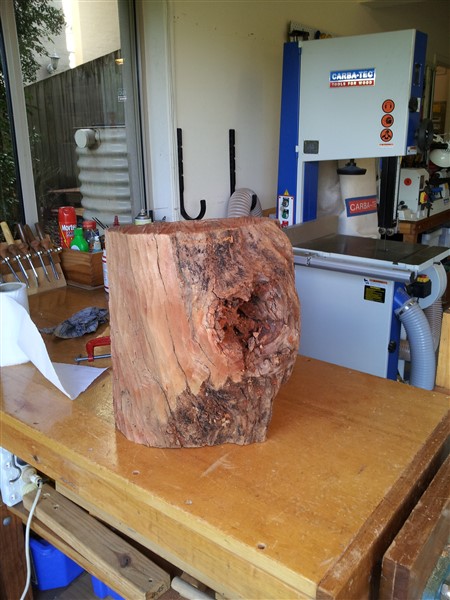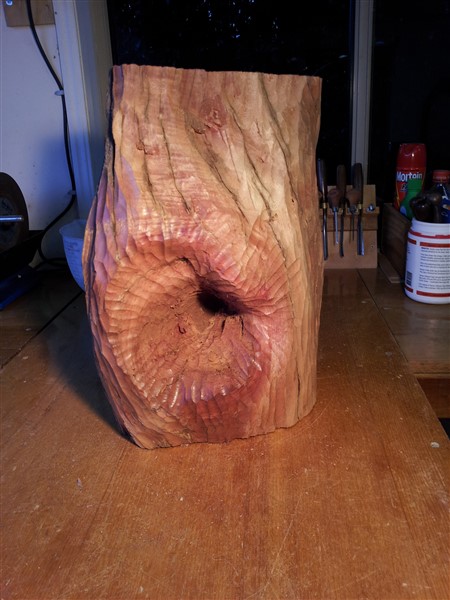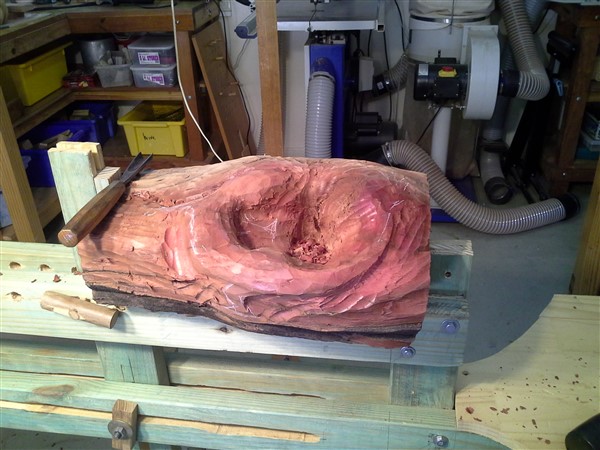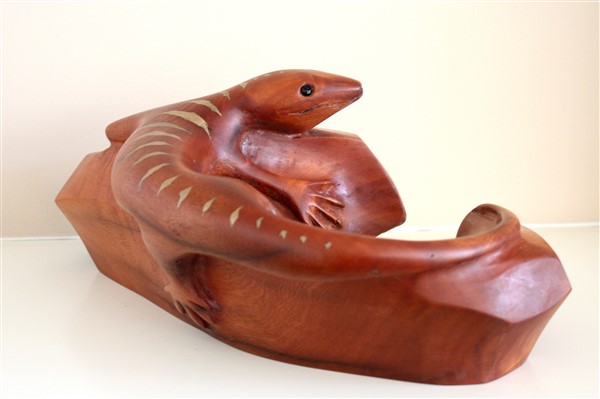Sometimes a deformed or damaged piece of wood can turn out to have interesting possibilities ……
This was a half section of a rosewood log that I thought would end up as scrap, because of the large knot hole, but cutting off some of the bark showed that most of the underlying wood wasn’t too bad. As rosewood isn’t that easy to find it seemed worthwhile to see what else lay below…
When the rest of the bark was removed, most of the wood around the knot hole was also pretty good and largely free of damage from the usual villains – borers and fungus, and a shape slowly appeared that reminded me of a the curve of a lizard on a log or tree branch…
As the shape of the lizard began to appear, my luck seemed to hold, as the key parts were also in good condition. I seemed as though a reasonably realistic lizard could be fashioned if I could manage to cut the legs going down onto the walls of the cave of the knot hole…It then became clear that having the lizard sitting on a tree trunk would be a bit tricky so I reshaped the base as a rock. There was one crack across the neck that I couldn’t carve out without going too deep, so I decided to turn a fault into a feature.
So I made it into a more regular diamond shape and carved a few more as markings down the body and tail then and filled them with bronze inlays.
The final result – the Rock Lizard.
This inlay technique has since often proved useful – not only for dealing with unwelcome cracks and other blemishes, but as a decoration in its own right in perfectly good, but otherwise not very interesting wood. Sometimes the grain is quite beautiful enough on its own without any ‘lilly-guilding’, but a plain surface may suddenly come alive with the help of a little cosmetic surgery. As with ageing celebrities, it’s important not to overdo it.



